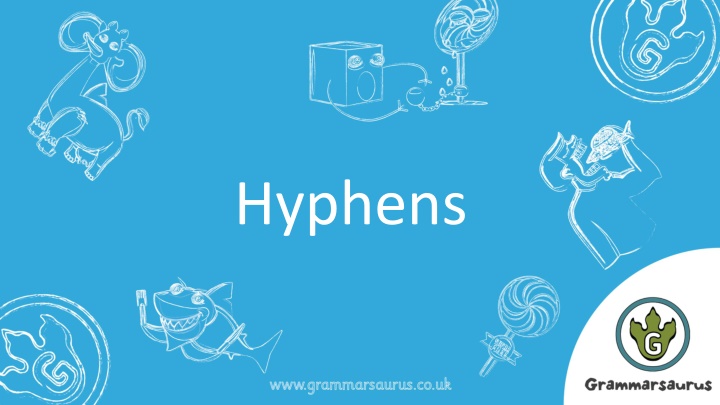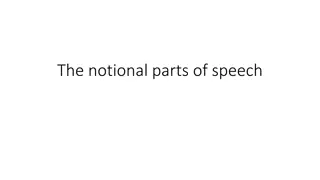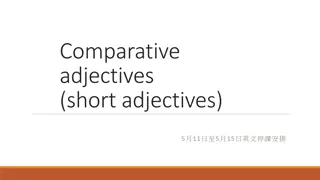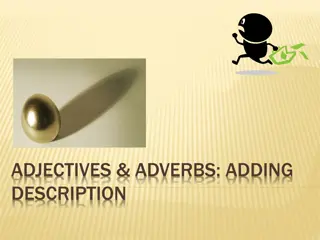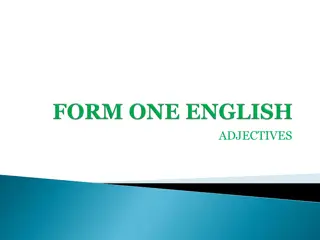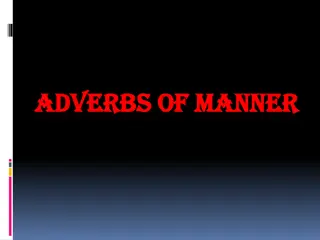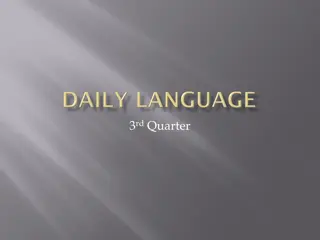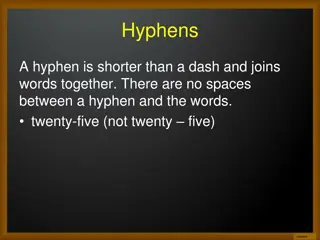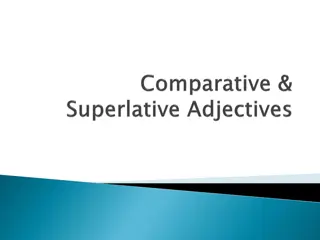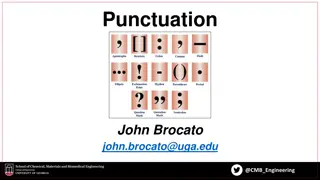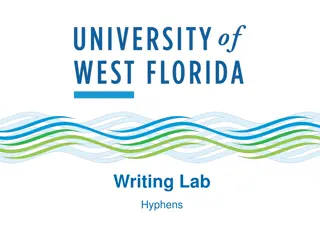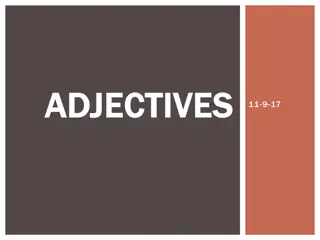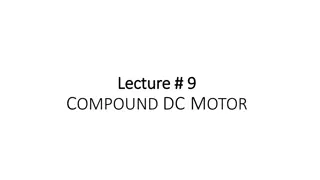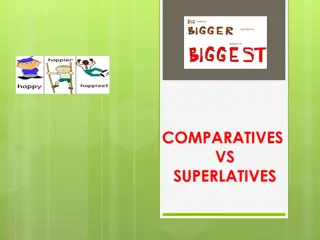Mastering the Use of Hyphens in Compound Adjectives
Hyphens play a vital role in creating compound adjectives by joining words together to form longer descriptive phrases. This guide provides tips on identifying, using, and creating compound adjectives with hyphens to enhance your writing skills. Discover the importance of hyphens in maintaining clarity and meaning in sentences, and practice forming compound adjectives through engaging examples and exercises.
Download Presentation

Please find below an Image/Link to download the presentation.
The content on the website is provided AS IS for your information and personal use only. It may not be sold, licensed, or shared on other websites without obtaining consent from the author.If you encounter any issues during the download, it is possible that the publisher has removed the file from their server.
You are allowed to download the files provided on this website for personal or commercial use, subject to the condition that they are used lawfully. All files are the property of their respective owners.
The content on the website is provided AS IS for your information and personal use only. It may not be sold, licensed, or shared on other websites without obtaining consent from the author.
E N D
Presentation Transcript
1 Identifying hyphens Hyphens are used to join together words to create a longer word. They are most commonly used when creating compound adjectives. Top tip Can you spot the compound adjectives in the sentences below? The easiest way to spot an adjective is to identify the nouns in your sentence and then ask which word/words are describing my noun? noun noun noun The man-eating creature uses its razor-sharp claws to capture and kill its prey. This technologically-advanced software recognises your fingerprint in seconds. Did you know? Compound adjectives create expanded noun phrases! Visiting the moon is a once-in-a-lifetime opportunity for all astronauts. I prefer drinking sugar-free drinks, as sugar destroys the plaque on your teeth.
2 Why bother using them? Without hyphens, some sentences can lose their meaning and it becomes difficult to know what the writer is trying to say. Take a look at some of the examples below: or ? ? or man-eating shark man eating shark sugar-free lolly sugar free lolly Explain to your partner what the difference is in each picture and then decide what you think the hyphen does to the words before the noun.
3 Creating compound adjectives Here are a some words which can be glued together using hyphens to create one longer compound adjective. Use hyphens to create a suitable compound adjective to describe the nouns on the right: man-eating shark toddler child hotel pattern experience
4 Creating compound adjectives Jeepers! Look at that! This hybrid creature has just been discovered somewhere in the middle of the Amazon Rainforest! Apparently, you are now hyphen experts and we most certainly need to use some compound adjectives to describe this mesmerising beast! Your task is to describe the creature using compound adjectives (don t forget to add the hyphen!)
6 Creating compound adjectives adjective/adverb/noun +present participle (ing) Adjective + past participle short-legged short-haired heavy-footed circle-patterned slow-moving never-ending far-reaching Compare using -like Which body part or characteristic (e.g. speed, hunger etc.) might these compound adjectives relate to? shark-like elephant-like lion-like There might be an odd one out! Can you find it?
7 Creating compound adjectives Creating compound adjectives like (compare) +ed (describe) +ing (describe) Noun adjective/adverb/noun - (body part or characteristic) rhino cone throat like - shaped piercing horn lion sand fly like - coloured swatting tail - - Use the boxing-up grid to help you create your own expanded noun phrases using compound adjectives. -
5 Creating compound adjectives Describe the creature using compound adjectives (don t forget to add the hyphen!) tail shark-like fin grey-coloured fin ears eyes paws horn
